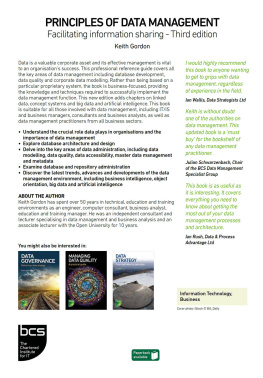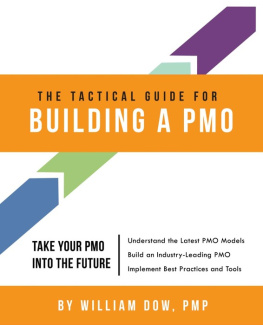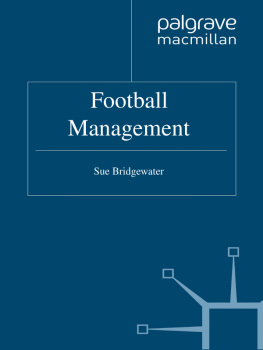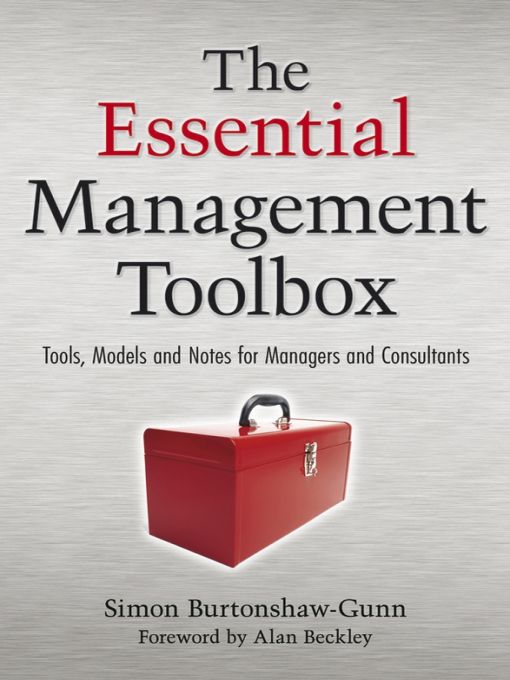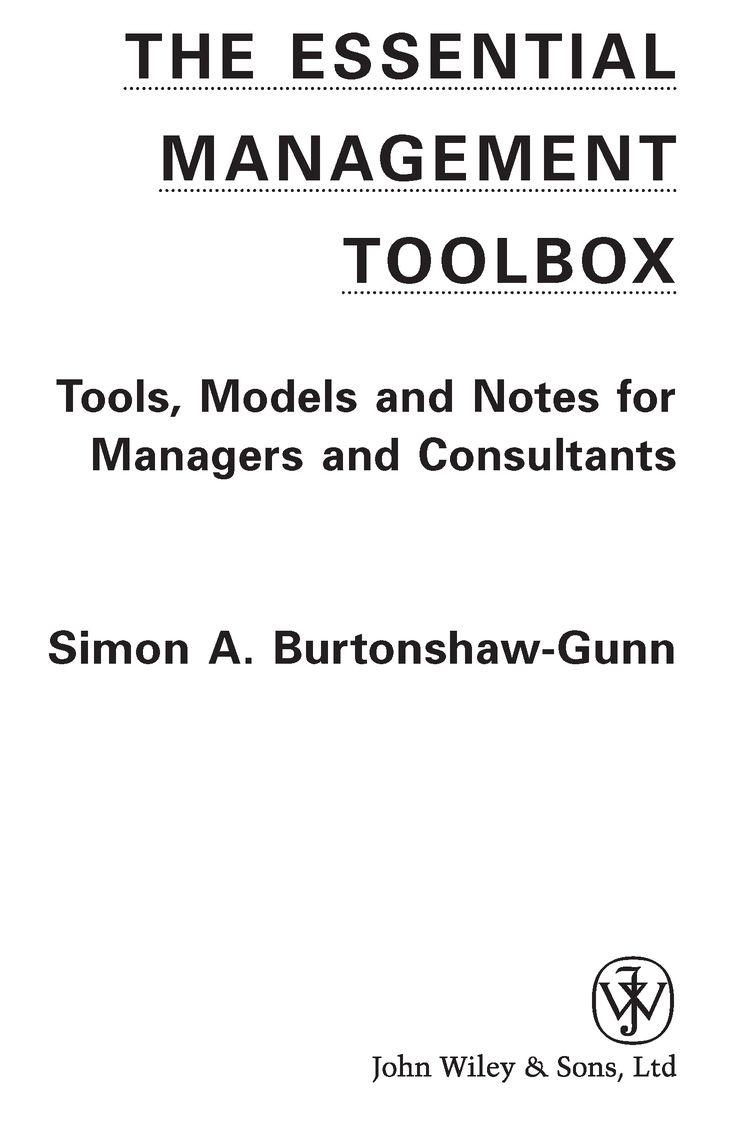Table of Contents
To The B-Gs - Carole, Alex and Edward
FOREWORD
This book from Simon Burtonshaw-Gunn will be of great use to management consultancy practitioners at all levels. It covers a wide range of consultancy tools and techniques that are well displayed, well described and well referenced. The reader will find the tools and techniques helpfully divided into 20 recognizable skill sectors within management consultancy fields and specialisms. There is no reference source available currently that concisely lists and briefly describes management consultancy tools and techniques across such a wide range of sectors. The contents are written up by the author with the accuracy and brevity of the unique blend of an experienced practitioner and a seasoned educator. This is also reflected in the authors unerring choice of safe, reliable, robust and instantly recognizable models, principles and practices. The method of depiction of the content, mainly in diagrammatic form, aids the process of quick reference and ease of understanding. The tools and techniques can be utilized across the whole range of organizational sectors and both the private and public sectors.
The tools described will be useful to the inexperienced management consultant to explain the working of tried and tested interventions and relating them back to solid and trusted reference books. The value of this is for the beginner to have a quick reference source and then, if necessary, undertake further and deeper research into the methodology from the identified source. There are clear benefits in this to contribute towards the professional and personal development of the management consultancy practitioner.
For the more experienced management consultant there is always an advantage in having a quick reference source of tools and techniques to remind them of the specifics of a principle or to enable a common understanding to be established in a consultancy team or with a client.
Thus, I can envisage that this book, with the simple idea of being a repository of the bare bones of management consultancy tools and techniques, will be of great value to all management consultants (and managers) in the field.
Alan Beckley
Alan Beckley is a company director of several management consultancy companies that hold ISO 9001 accreditation and IBC Recognized Practice status; he is an operational management consultant. He is also the External Verifier for management consultancy qualifications provided by the Chartered Management Institute (CMI) and an Assessor for the Institute of Business Consulting (IBC) for the Certified Management Consultant (CMC) award. He has been the managing editor of the IBCs Professional Consultancy web-based quarterly management consultancy magazine for several years.
INTRODUCTION
With a technological background the use of engineers tables and formulae has for me been a common occurrence to help both in my student days and as a practising professional. In progressing a career in management it seems that a similar reference book is absent despite a relentlessly growing list of management and business publications. Even a brief scan of the bookshelves will reveal that there is a wide spectrum from specialist publications to generalist Bluff your way in..., Dummies guide to... and others claiming to provide MBA knowledge from a days reading.
In the same way as providing engineers with a formula that relies on a level of prior knowledge and competence, the purpose of this book is not to short-cut any formal learning and understanding of the use of established and practical management tools and techniques but to provide an easy access to various management approaches through a collection of models and occasional brief prompting notes. The intention of this book is to provide a set of tools and models from tried and tested sources which can be used by scholars, practising managers, experienced consultants or newcomers to the profession to use in a practical way.
Just like the typical craftsmans toolkit rarely are more than a few tools used on a single project; nevertheless, the advantage of a full set of tools at least provides the opportunity to select the correct, efficient and safe tool - even if this is no guarantee of the proficiency of the user! While there will always be specialist tools for an expert - rarely needed by the majority of users - the generalist tools provided in this book cover a range of generic management themes. There is a widely held view that many management consultancy tools feature the use of a two by two matrix - and while this book does seem to support this view, these should be considered to be the equivalent of a set of spanners as each one may have the same appearance but will differ in its application. Where possible I have made reference to the origin of the models and tools in this book to guide the reader to where further information and detailed operating instructions may be gained. Full details of the material used are provided in the References section.
So often the various topics of management are interwoven: for example, some of the tools described in strategic management are also of use in marketing, business planning, HRM and international business. In many ways the massive topic of management itself can be thought of as a giant jigsaw of many interlocking pieces and as such the tools described in each alphabetically arranged section of this book can often be directly used or adapted for use in other management areas.
Many of the tools shown here are from works published over the last 30 years which coincide with the move to specialization and the jigsaw analogy of the field of management with the development of specialist topic areas. Indeed this trend for greater specialization continues as managers have to understand newer developments such as e-commerce and advances in business to business (B2B) and business to customer (B2C) relationships.
ACKNOWLEDGEMENTS
Following the concept of the engineers formula handbook described in the Introduction I am not claiming to present anything new but from my own experience have tried to compile a useful book for a number of users. Naturally this would not have been possible without the fine efforts from all those management authors, research publications and course notes, etc. which I have collected over the years. As such I am greatly indebted to all whose work appears in the book, and also to my own teachers and mentors who have aided my own journey through many management topics.
As time progresses and new tools, models and techniques become used there is opportunity for us all in the management community to develop this further, indeed if you have any comments on the models so far identified or wish to add more for a future edition then I would be very happy to hear from you. My contact details are: toolbox2008@hotmail.co.uk
I am very grateful to the following publishers, individuals and copyright holders who gave their permission to allow previously published work to be used in this book. Every effort has been made to ascertain copyright and seek permission; however, any omissions will be corrected in any future edition.
Academy of Management Review
Christopher Ahoy, Iowa State University, USA
American Association of Marketing
American Psychological Association



